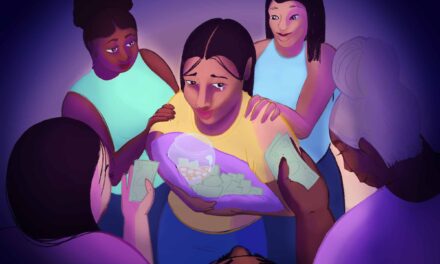Art
Annabel Keenan
Jul 5, 2023 4:01PM
Installation view of “Indian Theater: Native Performance, Art, and Self-Determination since 1969” at Center for Curatorial Studies, Hessel Museum of Art, Bard College, 2023. Photo by Olympia Shannon. Courtesy of CCS Bard.
This summer, exhibitions featuring Indigenous art are on view across the U.S., showcasing a range of work by emerging and established artists. At the Whitney, “Jaune Quick-to-See Smith: Memory Map” marks the first New York retrospective of the artist, who is a member of the Confederated Salish and Kootenai Tribes. At The Aldrich in Ridgefield, Connecticut, Raven Halfmoon’s (Caddo Nation) monumental stoneware sculptures claim space for Indigenous women in “Raven Halfmoon: Flags of Our Mothers.” Meanwhile, Wendy Red Star (Apsáalooke, Crow Tribe), Courtney M. Leonard (Shinnecock), and Jeffrey Gibson (Mississippi Choctaw/Cherokee) all have solo shows of their own.
These shows, as well as several thematic group exhibitions, create a moment of recognition for contemporary Indigenous art, providing historical context for the work being made today. As the art world shows greater inclusion towards Indigenous cultures internationally, institutions are hiring full-time curators of Indigenous art, marking a promising sign for the future of the field.
Raven Halfmoon, Caddo Woman Warrior, 2021. Courtesy of the artist .
Jeffrey Gibson, installation view of “THE SPIRITS ARE LAUGHING” at the Aspen Art Museum, 2022. Photo by Tony Prikryl. Courtesy of the artist; Sikkema Jenkins & Co, New York; Kavi Gupta Gallery, Chicago; Roberts Projects, Los Angeles; and Stephen Friedman Gallery, London.
Advertisement
“I am glad to see a greater recognition that all Indigenous artists are unique and come from different cultural perspectives,” said Gibson, whose current exhibitions include solo shows at the Aspen Art Museum and Jessica Silverman. “I see an increase in the understanding of Indigenous makers, their intentions and their cultural perspectives, but there is so far to go. I’d like to think that these artists are being treated more as individuals rather than representative of a large and more general Indigenous community,” he said.
For Gibson’s exhibition at the Aspen Art Museum, “THE SPIRITS ARE LAUGHING,” he invited Indigenous flag spinners with ancestral ties to the region to participate in a performance and subsequent film piece. Many of the participants had never visited the land.
“When selecting performers, I always try to prioritize and amplify Indigenous and queer voices and bodies,” said Gibson. “This began as a way to increase representation of Indigenous people in the arts.…I also want to encourage queer voices and bodies, and reflect body-type diversity, and have multiple generations take part in my practice.”
Jeffrey Gibson, installation view of “ONCE MORE WITH FEELING” at Jessica Silverman, 2023. Photo by Philip Maisel. Courtesy of the artist and Jessica Silverman, San Francisco.
Gibson is also included in “Indian Theater: Native Performance, Art, and Self-Determination since 1969,” a standout group show at the Center for Curatorial Studies at Bard College’s Hessel Museum of Art. Featuring over 100 works from the 1960s to the present, the exhibition showcases a broad range of Native American, First Nations, Métis, Inuit, and Alaska Native artists. Curated by Native-led initiative Forge Project’s chief curator Candice Hopkins (Carcross/Tagish First Nation), the show traces the experimentation and performance that laid the groundwork for contemporary Indigenous art.
Gibson’s work in “Indian Theater” includes Don’t Make Me Over (2023), a collaborative performance with Arielle Twist (Nehiyaw [Cree]), a two-spirit trans woman artist, author, and educator. The piece responds to the song of the same name written by Burt Bacharach and Hal David in 1962 and recorded by Dionne Warwick.
Installation view of “Indian Theater: Native Performance, Art, and Self-Determination since 1969” at Center for Curatorial Studies, Hessel Museum of Art, Bard College, 2023. Photo by Olympia Shannon. Courtesy of CCS Bard.
The show also features shields and video footage from Cannupa Hanska Luger’s (Mandan/Hidatsa/Arikara/Lakota) Mirror Shield Project (2016), which he created as a social engagement initiative in support of the water protectors who opposed oil pipeline construction near Standing Rock, North Dakota. Luger made shields for the water protectors to defend themselves and shared tutorials online so others could participate and send shields of their own.
In the recent Counterpublic triennial, a civic exhibition in St. Louis, Luger created another participatory work in the form of an augmented reality digital overlay activated on Instagram. Future Ancestral Technologies: Roaming (2023) brings to life seven different figures in Midéegaadi (“buffalo” in Hidatsa) regalia through users’ cell phones or tablets. The work reinstates the buffalo—a symbol of survival and adaptation for many Indigenous peoples—on the land in St. Louis and wherever users activate the work through their devices.
“This work does more than celebrate an animal,” said Luger. “It is a pledge of accountability to the land and waters that have sustained the Buffalo Nation and, in turn, the human beings. Midéegaadi empowers Indigenous people and practices as central to global futures and reflects a future space where we once again live in reverence and respect for our more-than-human kinships.”
Cannupa Hanska Luger, We Survive You–Midéegaadi, 2023. Photo by Brandon Soder. Courtesy of the artist and Garth Greenan Gallery, New York City.
The commercial world has been slow to see the potential in Indigenous artists, with only one Indigenous-owned gallery specializing in contemporary Indigenous art (Buffalo’s K Art) operating in the U.S. This means that collectors are often unaware of the true breadth of contemporary work by Indigenous artists. “When most people think of ‘Indian art,’ they think historically and through a backwards lens, often ignoring Indigenous artists working in the contemporary space, which is a disservice as Native nations and Indigenous communities are current and exist in the ‘here and now,’” said K Art founder Dave Kimelberg (Seneca Nation).
In the three years since he opened the gallery, Kimelberg has seen increased interest in Indigenous artists. “Prices for certain artists’ work have grown significantly in a relatively short time,” he said. “There are still many Native artists that are underrecognized. There’s a lot of work to do, but it’s moving in the right direction.”
Museums, however, are beginning to realize their blind spot. The Brooklyn Museum, for example, recently hired its first full-time curator of Indigenous Art, Darienne (Dare) Turner (Yurok). The museum has an impressive collection of Native art with over 13,600 items dating from 1100 B.C.E. to 1500 C.E. as well as the late 19th and 20th centuries.
Installation view of “Indian Theater: Native Performance, Art, and Self-Determination since 1969” at Center for Curatorial Studies, Hessel Museum of Art, Bard College, 2023. Photo by Olympia Shannon. Courtesy of CCS Bard.
“In working with vast collections, particularly ones filled with historic objects, we have to remember that artworks are nothing without the people that made them,” said Turner. “Objects connect the material to the human; they allow people to see material objects as evidence of a lived experience; and, most importantly, they make it possible for Native people to see their own material culture, history, and legacy.”
Turner actively engages with Native artists and communities to facilitate connections with the objects and artworks in the collection. She will also be working with contemporary artists in her new role.
“This is really important to me because such work drives home how many Native artists today build upon their cultural legacies,” said Turner. “For generations, many museums have represented Native peoples as artifacts or footnotes in an American story of conquest. But Native people still thrive today! The Brooklyn Museum recognizes that fact and is working concertedly to change that story.”
Annabel Keenan





